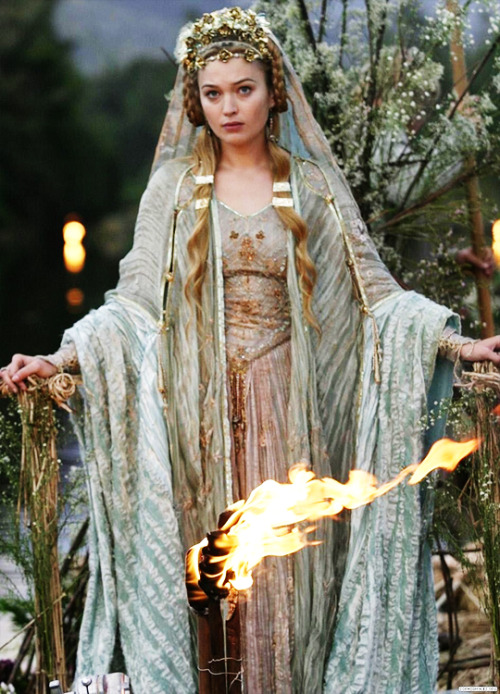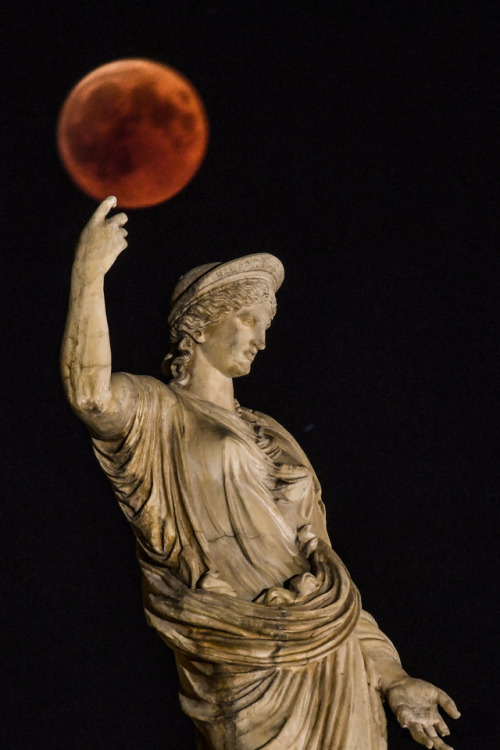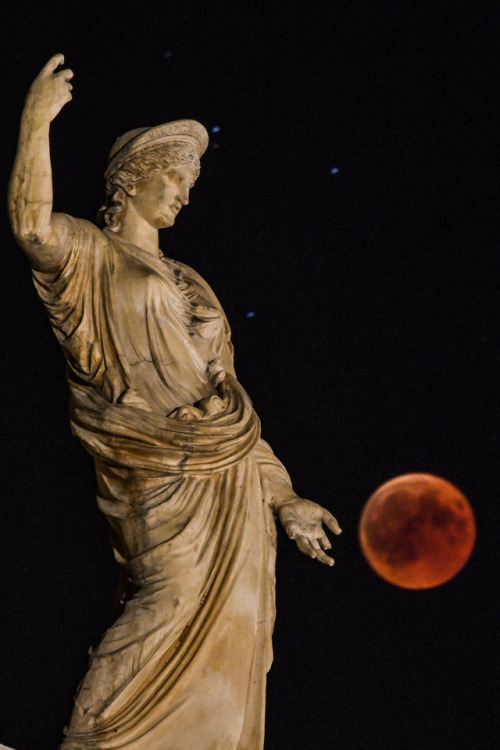Grantaire Replied In A Grave Tone: “you Shall See.”






grantaire replied in a grave tone: “you shall see.”
More Posts from Temple-of-bullets and Others





Hannibal 1.01 "Apéritif"

The Knight of the Flowers, 1894, by Georges Rochegrosse. Detail and photo by Paul Perrin. Edit.

Sophia Myles in ‘Tristan & Isolde’ (2006).



The full moon during a “blood moon” eclipse beside a statue of the ancient Greek goddess Hera in central Athens on July 27, 2018.
Image: Aris Messinis / AFP
(Facebook: Greek-Roman Gods & More)

Inktober #23: Ancient






Here are some gifs of Hamlet and Horatio being very friendly and heterosexual in Hamlet at Elsinore (1964) with Christopher Plummer and Michael Caine
hi could u explain the etymology behind arabic geographical terms (magrheb, sham, sudan)
hi, sorry for the late reply.
al- maghreb ( المغرب ) means where the sun sets. Morocco was the furthest point where Arabs could see the sunset so this is why morocco is named Maghreb in Arabic. But, in english and also in Arabic ( al-maghreb al- arabi), it means the north african region ( Libya, Tunisia, Algeria, Morocco and Mauritania). We can also say al- Machraq ( المشرق) al-arabi as opposed to al- mghreb, and it refers to the middle eastern region.
Shem / Sham ( شام) is derived from the name Sem, one of the three sons of Noah ( the believed father of semitic people). it is said that he used to live there, in the laventine. the name was altered from Sem to Shem through the years.
Sudan ( سودان ) has a persian and Arabic origin. it means black people in both languages.




Battleship Potemkin (1925, dir. Sergei M. Eisenstein)








Behind the scenes of Lawrence of Arabia
-
 bellairestrella liked this · 7 months ago
bellairestrella liked this · 7 months ago -
 in-the-darkest-place liked this · 7 months ago
in-the-darkest-place liked this · 7 months ago -
 textbookchoices reblogged this · 7 months ago
textbookchoices reblogged this · 7 months ago -
 textbookchoices reblogged this · 9 months ago
textbookchoices reblogged this · 9 months ago -
 lxvenderite liked this · 1 year ago
lxvenderite liked this · 1 year ago -
 an-angels-fury liked this · 2 years ago
an-angels-fury liked this · 2 years ago -
 diphady liked this · 3 years ago
diphady liked this · 3 years ago -
 lessnearthesun liked this · 3 years ago
lessnearthesun liked this · 3 years ago -
 conniecorleone reblogged this · 3 years ago
conniecorleone reblogged this · 3 years ago -
 botheredbuck liked this · 4 years ago
botheredbuck liked this · 4 years ago -
 bvcktommy reblogged this · 4 years ago
bvcktommy reblogged this · 4 years ago -
 maddt liked this · 5 years ago
maddt liked this · 5 years ago -
 brokcnsouls reblogged this · 5 years ago
brokcnsouls reblogged this · 5 years ago -
 nicoalkaysani reblogged this · 5 years ago
nicoalkaysani reblogged this · 5 years ago -
 never-apollogize1 liked this · 5 years ago
never-apollogize1 liked this · 5 years ago -
 judicieuxxx liked this · 5 years ago
judicieuxxx liked this · 5 years ago -
 mediahoras liked this · 6 years ago
mediahoras liked this · 6 years ago -
 lizhammie liked this · 6 years ago
lizhammie liked this · 6 years ago -
 book--butterfly liked this · 6 years ago
book--butterfly liked this · 6 years ago -
 inkstainsonpages liked this · 6 years ago
inkstainsonpages liked this · 6 years ago -
 hypercium liked this · 6 years ago
hypercium liked this · 6 years ago -
 xoanon liked this · 6 years ago
xoanon liked this · 6 years ago -
 fictionalenigma liked this · 6 years ago
fictionalenigma liked this · 6 years ago -
 natalieroad reblogged this · 6 years ago
natalieroad reblogged this · 6 years ago -
 romans-roy liked this · 6 years ago
romans-roy liked this · 6 years ago -
 standardlovers liked this · 6 years ago
standardlovers liked this · 6 years ago -
 princeoftherunaways liked this · 6 years ago
princeoftherunaways liked this · 6 years ago -
 folkloresthings liked this · 6 years ago
folkloresthings liked this · 6 years ago -
 rosesnthornes78 liked this · 7 years ago
rosesnthornes78 liked this · 7 years ago -
 lokisbutterknives reblogged this · 7 years ago
lokisbutterknives reblogged this · 7 years ago -
 lokisbutterknives liked this · 7 years ago
lokisbutterknives liked this · 7 years ago -
 femissamelie reblogged this · 7 years ago
femissamelie reblogged this · 7 years ago -
 onceandfuturebitch reblogged this · 7 years ago
onceandfuturebitch reblogged this · 7 years ago -
 warriormoustache liked this · 7 years ago
warriormoustache liked this · 7 years ago -
 betweenheroesandvillains liked this · 7 years ago
betweenheroesandvillains liked this · 7 years ago -
 acerocker-sunshine reblogged this · 7 years ago
acerocker-sunshine reblogged this · 7 years ago -
 sarcastic-fandomtastic-dragon liked this · 7 years ago
sarcastic-fandomtastic-dragon liked this · 7 years ago -
 sideshowcinnamon liked this · 7 years ago
sideshowcinnamon liked this · 7 years ago -
 teddyisgroovy reblogged this · 7 years ago
teddyisgroovy reblogged this · 7 years ago -
 aroanehring liked this · 7 years ago
aroanehring liked this · 7 years ago -
 theyrejustbehindtheveil liked this · 7 years ago
theyrejustbehindtheveil liked this · 7 years ago -
 athomas0925 liked this · 7 years ago
athomas0925 liked this · 7 years ago -
 notorioushiphopcrew liked this · 7 years ago
notorioushiphopcrew liked this · 7 years ago -
 wellthisstinks liked this · 7 years ago
wellthisstinks liked this · 7 years ago